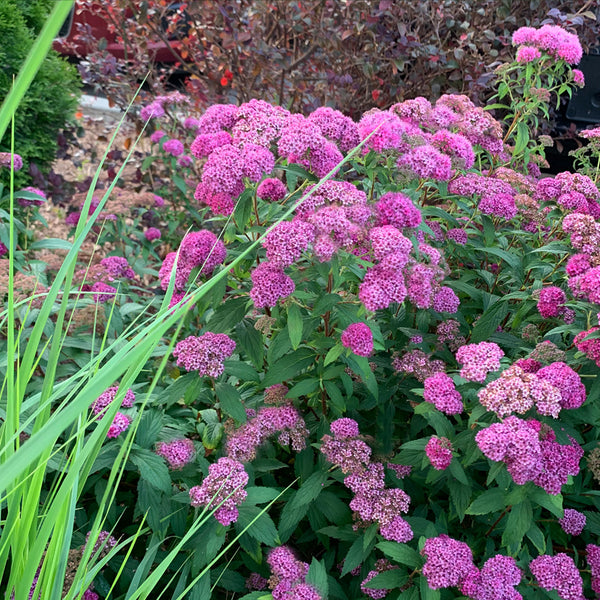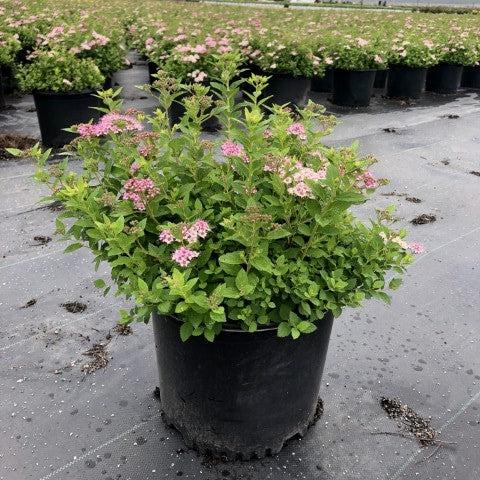Best Companion Plants For Little Princess Spirea
Title: Best Companion Plants for Little Princess Spirea
Introduction:
Little Princess Spirea is a beautiful, low-maintenance shrub that is perfect for adding color and interest to any garden. It blooms in the summer with clusters of pink flowers, and it can grow to be 3 feet tall and wide. Little Princess Spirea is easy to care for and is drought-tolerant, making it a great choice for even the most inexperienced gardeners.
One of the best things about Little Princess Spirea is that it can be easily paired with other plants to create a stunning garden display. When choosing companion plants for Little Princess Spirea, there are a few things to keep in mind. First, you want to choose plants that have similar growing conditions. Little Princess Spirea prefers full sun to partial shade and moist, well-drained soil. Second, you want to choose plants that will complement the colors and textures of Little Princess Spirea. For example, you might want to pair it with plants that have blue, white, or yellow flowers.
Here are some of the best companion plants for Little Princess Spirea:
- Ornamental grasses: Ornamental grasses add movement and interest to the garden, and they can help to fill in the space around Little Princess Spirea. Some good options include blue oat grass, fountain grass, and Japanese forest grass.
- Perennials: There are many perennials that can be paired with Little Princess Spirea, including coneflowers, daylilies, lavender, yarrow, and salvia. These plants come in a variety of colors and textures, so you can choose the ones that best complement your garden's color scheme.
- Evergreens: Evergreens provide year-round interest in the garden, and they can help to provide structure and contrast to Little Princess Spirea. Some good options include boxwood, juniper, and holly.
Main Content:
In addition to the plants listed above, there are a few other factors to consider when choosing companion plants for Little Princess Spirea. For example, you may want to choose plants that have similar bloom times so that your garden is always in bloom. You may also want to choose plants that have similar water and fertilizer requirements.
It is also important to consider the overall look and feel of your garden when choosing companion plants. For example, if you have a formal garden, you may want to choose more structured plants, such as boxwood or juniper. If you have a more informal garden, you may want to choose more relaxed plants, such as coneflowers or daylilies.
Conclusion:
With so many great companion plants to choose from, you can easily create a beautiful and colorful garden with Little Princess Spirea as the centerpiece. By taking the time to choose plants that have similar growing conditions, complementary colors, and similar bloom times, you can create a garden that will be stunning all season long.
FAQ of little princess spirea companion plants
- What are the best companion plants for little princess spirea?
Little princess spirea is a low-growing shrub that blooms in white or pink flowers in the spring. It prefers full to part sun and moist, well-drained soil. Some good companion plants for little princess spirea include:
* Other spireas, such as Japanese spirea or bridal wreath spirea
* Perennials, such as daylilies, hostas, or coneflowers
* Groundcovers, such as creeping thyme or pachysandra
* Shrubs, such as hydrangeas, roses, or viburnums
These plants will complement the little princess spirea's blooms and provide different textures and colors in the garden. They will also help to attract pollinators, such as butterflies and bees.
- What should I consider when choosing companion plants for little princess spirea?
When choosing companion plants for little princess spirea, there are a few factors to consider:
* Sunlight: Little princess spirea prefers full to part sun. So, you'll want to choose companion plants that also thrive in these conditions.
* Soil: Little princess spirea prefers moist, well-drained soil. So, you'll want to choose companion plants that have similar soil requirements.
* Height: Little princess spirea is a low-growing shrub. So, you'll want to choose companion plants that are also low-growing or that will not overwhelm the spirea.
* Color: Little princess spirea blooms in white or pink flowers. So, you can choose companion plants that will complement the spirea's blooms or that will add different colors to the garden.
- How do I plant little princess spirea companion plants?
To plant little princess spirea companion plants, you'll need to dig a hole that is twice as wide and as deep as the root ball of the plant. Backfill the hole with soil, tamp it down, and water the plant well.
You can plant little princess spirea companion plants in the spring or fall. If you're planting them in the spring, make sure to do it before the spirea blooms. If you're planting them in the fall, make sure to do it before the ground freezes.
- How do I care for little princess spirea companion plants?
Little princess spirea companion plants are relatively easy to care for. They need regular watering, especially during the first year after planting. They also need to be fertilized once a year in the spring.
In addition to watering and fertilizing, you'll also need to deadhead the little princess spirea companion plants after they bloom. This will encourage them to rebloom.
Image of little princess spirea companion plants
- Astilbe: Astilbe is a shade-loving perennial that blooms in summer with delicate pink, white, or purple flowers. It is a good companion plant for Little Princess spirea because it will help to fill in the space underneath the spirea's blooms.

- Hosta: Hostas are also shade-loving perennials that come in a variety of colors, including green, blue, and yellow. They are a good companion plant for Little Princess spirea because they will help to add interest to the garden throughout the summer.

- Heuchera: Heucheras are colorful perennials that bloom in spring with pink, red, or white flowers. They are a good companion plant for Little Princess spirea because they will help to add a pop of color to the garden.

- Coral bells: Coral bells are another type of heuchera that is known for its colorful foliage. They are a good companion plant for Little Princess spirea because they will help to add a touch of brightness to the garden.

- Daylily: Daylilies are a type of perennial that blooms in summer with large, colorful flowers. They are a good companion plant for Little Princess spirea because they will help to extend the bloom time of the garden.

- Lily of the valley: Lily of the valley is a small, white flower that blooms in spring. It is a good companion plant for Little Princess spirea because it will help to add a touch of elegance to the garden.
- Juniper: Juniper is a coniferous shrub that can be used to add structure to the garden. It is a good companion plant for Little Princess spirea because it will help to contrast the spirea's delicate flowers.

- Yarrow: Yarrow is a perennial that blooms in summer with yellow, white, or pink flowers. It is a good companion plant for Little Princess spirea because it will help to add a touch of wildflowers to the garden.

- Lavender: Lavender is a fragrant perennial that blooms in summer with purple flowers. It is a good companion plant for Little Princess spirea because it will help to add a touch of Mediterranean flair to the garden.

Post a Comment for " Best Companion Plants For Little Princess Spirea"